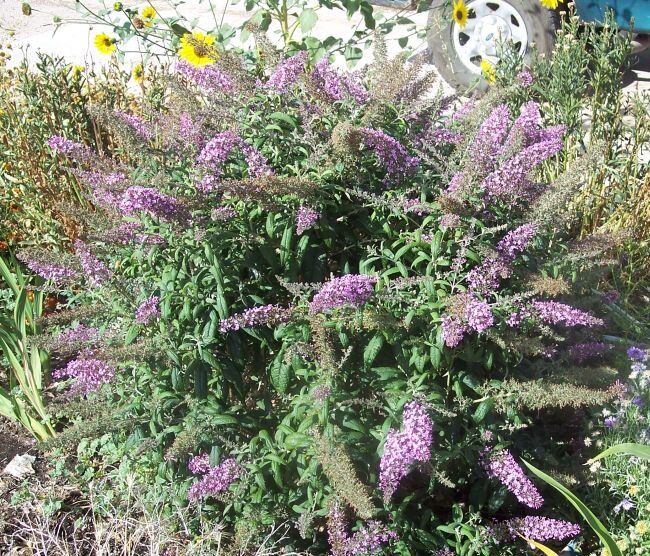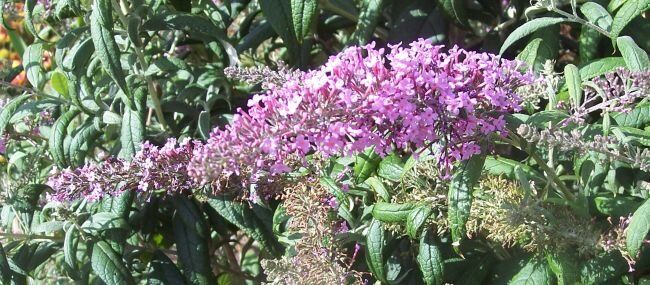
I have several more blogs to write on the ins and outs of pond building, but decided to take a break today to discuss another favorite plant from my yard. The butterfly bush puts out a great show of blooms with some blooming from early spring to mid summer and others from mid summer to mid fall. The blooms are anywhere from white, to pink, blue to purple and there is even a variety that produces white, pink and purple all on the same bush. The flower spikes draw butterflies, bees and hummingbirds to your yard as well. Also known as summer lilac, this plant is a native of China, but was first brought to England in the 1700s. Hardy from zones 5 to 10, this plant is suitable for xeriscape, and does well in full sun to part shade. No parts of the plant are known to be poisonous. The flowers are fragrant and add great color to a corner or back of a border. The bush grows anywhere from 4 to 10 feet in height and 4 to 6 feet wide, depending on cultivar, but in areas that receive heavy snow, it should be cut back to a more compact three feet or so in the late fall or early spring before the leaves begin to appear. This keeps the bush more compact, and as the flowers appear on new stems, it keeps the blooms coming. to make the blooms more profuse, you can also deadhead the flowers throughout the season (or remove them after flowering ends), and they make nice cut flowers if you remove them when they are about half way into their bloom. They stay nice in a vase for about a week. Some varieties put out seeds and are considered invasive, so cutting them back every fall and pulling volunteers is imperative, while others stay compact. All varieties can be cultivated from hardwood cuttings, and many from softwood cuttings.
Some varieties put out seeds and are considered invasive, so cutting them back every fall and pulling volunteers is imperative, while others stay compact. All varieties can be cultivated from hardwood cuttings, and many from softwood cuttings.
I know some people have had luck growing these from wintersown seeds, but some varieties do not set seeds, or if they do, the plants will not grow true from seed, so check and see which type you have. If growing from seed, they need to be chilled for four weeks and can take up to 90 days to germinate–another good reason to wintersow (I’ll explain wintersowing in November or December).

I’ve always wondered about butterfly bush. Thanks for the info.
I love butterflies. What a pretty plant. You’re knowledge never ceases to amaze me.
We need to meet at your place sometime soon so we can see it in person.